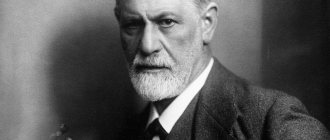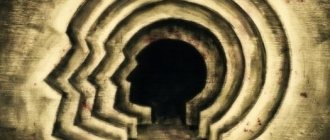Essence and description
To understand what the conscious and unconscious are in psychology and how they are related to each other, you need to know what consciousness is. Characteristics of consciousness:
- The differences between object and subject are fixed in consciousness. Man is the only creature that can direct personal energy to self-development, knowledge of its own developmental characteristics. A person can separate himself from others based on different criteria.
- Consciousness can be called a vast area containing knowledge, teachings about the world around us, society. The enrichment of human knowledge with new information is carried out with the help of cognitive processes - thinking, memory, imagination, perception, sensation. If the processes are disrupted, the perception of the surrounding world is destroyed, mental abnormalities appear, and consciousness collapses.
- Activation of the sensory relationship. The way a person relates to the world around him and other people is determined by his higher feelings.
- Determining the purpose of the activity. Any type of activity has certain motives and objectives. A person makes decisions and determines actions that depend on the influence of external factors. Man is the only living creature that can act not only according to conditions, but also despite them.
The unconscious is mental phenomena, properties, processes that are not consciously realized by a person and cannot be controlled. This includes reflexes, reactions to external stimuli, and perception of images.
The question of the relationship between the conscious and unconscious and their influence on human life remains one of the most difficult.
Freud on the unconscious
The key question in understanding what the unconscious is is the question of what it is filled with and why. Freud's main thesis on this matter goes something like this: there is nothing in the unconscious that was not once conscious. This is a fundamental point, the importance of which will become clearer when we come to Jung's concept of the unconscious.
Freud's understanding of the unconscious is essentially close to the definition of memory: according to Freud, the unconscious contains only what a person was once aware of, what flashed through his consciousness with one degree or another of intensity. Perhaps it was one fleeting thought, or maybe it was a whole layer of experiences that for some reason left consciousness, just as if they were simply “forgotten.”
The difference with ordinary passive memory is that unconscious contents carry a certain charge of active mental energy and, being outside the field of view of ordinary everyday consciousness, continue to exert their hidden influence on it. And the higher the charge of this suppressed energy, the stronger or even more aggressive its influence on conscious processes.
In this sense, the Freudian unconscious is in hostile conflict with consciousness, illustrating the ancient motif of the struggle between good and evil.
Now to the question of why anything ends up in the unconscious at all. The unconscious includes those mental contents that are unacceptable to the dominant conscious position or are simply mentally painful and do not have a proper outlet.
Most of the unconscious is precisely what the conscious mind has found unacceptable. First of all, these are those desires, thoughts or needs that arise in the mind, but do not pass internal moral and political censorship. Consciousness strives for good, in its subjective understanding, and therefore tries to suppress all evil in itself - again in its subjective understanding.
Freud identified a separate authority in the psyche that is responsible for the moral purity of the entire personality and called it the Super-Ego or Super-I. This is the very thing that creates a feeling of shame in a person, his conscience.
But here you need to understand that we are talking about very ephemeral things, and that there is no need to reify these individual mental mechanisms. In fact, they are not there, it just looks from the outside as if they were. In reality, the psyche is more like a brine, where there are a lot of all sorts of impurities, but at the same time it cannot be said that here is one component and there is another.
The internal moral censor is formed under the pressure of upbringing - it is purposefully developed in the child. Superficial motivation is the desire to raise a “good person”, one who will clearly know what is good and what is bad, and at the same time will share the criteria of good and evil that are common to a given society.
A less conscious motivation is the creation of a control mechanism over the child and future member of society. What is beneficial to the parent and society is “good”, and what is not beneficial to them is “bad”. And the instilled conscience subsequently serves as an internal policeman for him, who takes out his stick and punishes for “bad” deeds even when no one sees it.
From the very moment when a child begins to separate good from evil, the unconscious begins to form in him. At least that part of him that Freud became interested in. Everything that a child discovers is evil in himself, from that moment on, he tries to hide, hide. At first, he hides it only from those around him, and then, when his conscience grows stronger and gains strength, he begins to hide it from himself.
Thus, the unconscious initially arises on the basis of an internal conflict between the natural nature of man and the artificial demands of society, taken too close to the heart. With proper upbringing, this conflict can be minimized, but this requires parents to overcome their own internal conflict, which is very rare. In practice, parents usually follow the beaten path, raising a powerful, hard Super-Ego in their child in their own image and likeness.
A minority of the unconscious consists of memories and experiences that cause severe mental pain - the loss of loved ones or, for example, stories of severely wounded pride. These contents are acquired later, during adult conscious life, and do not cause as much trouble as desires or personality traits suppressed by moral prohibitions. At least, if we are not talking about some exceptional situations, when mental scars contain such an emotional charge that they completely deprive a person of peace of mind.
Historical summary
The first mentions of the area of the unconscious, the processes that it contains, can be found in the works of Plato, namely in the doctrine of cognition-memory. This concept underwent fundamental changes after the publication of work on the study of consciousness by R. Descartes. He believed that beyond consciousness there could only be physiological, but not mental, activity of the brain.
The concept of the unconscious was first formulated by G. Leibniz in his work “Monadology”, published in 1720. He argued that it is precisely this that is the lowest manifestation of mental activity. In his opinion, this area is located on the border of conscious ideas.
An attempt to make an accurate materialistic description was made by D. Hartley. He combined the area of the unconscious with the work of the central nervous system.
The incentive for active study of the area of the unconscious, the mental processes that it contains, appeared after many successes in the study and development of psychopathology. To work with patients, specific techniques were used, with the help of which scientists influenced the area of the unconscious. A striking example is hypnosis.
Current research on the issue
Today, many new disciplines have emerged that are, to varying degrees, interested in advancing the study of this problem. The unconscious in psychology has not yet been thoroughly studied, and much knowledge is still based on teachings developed by specialists in past centuries. In particular, modern research usually draws on Sigmund Freud's concepts. Among the most promising theories at the moment, we can mention the development of the use of cybernetic methods for modeling the unconscious.
Author: Denis Dmitriev
Levels
Levels:
- Consciousness. It is called the top layer of the psyche, the leading edge, the “tip of the spear.” This is where the interaction of the psyche with the outside world begins. Consciousness can be divided into 2 parts. The main one through which the main information passes is focus. This part is surrounded by the periphery.
- Preconscious. Psychologists call this layer the “service area.” Its main function is to protect consciousness from overload. The preconscious contains impressions that a person cannot be aware of, but is able to turn to them at the necessary moments. The preconscious region contains all irrelevant experience.
- Repressed unconscious. This level contains components of the psyche that were previously classified as conscious, but were gradually repressed. One of the main reasons why certain components of the psyche are transferred is a painful experience for the individual. Since the psyche cannot painlessly integrate it into the usual consciousness, it displaces it.
- The fundamentally unconscious unconscious. It is a deep layer of mental phenomena. It is closest to biological, psychophysiological processes in the body. This layer contains mental phenomena that could never be conscious and will not be conscious in the future. Examples include instincts and reflexes.
Structure of consciousness
Note 1
Consciousness is one of the most complex objects of study, since it does not have its own qualitative specificity. The specificity of consciousness is determined by those mental processes and phenomena that fill it, but are not themselves consciousness.
So consciousness is filled:
- sensory images, as the results of the processes of perception and sensation;
- thought chains, concepts, ideas that arise in the course and as a result of thinking;
- images of the past extracted from the past;
- affects, reflecting the emotional reaction to real and imaginary stimuli;
- desires, reflecting needs and motives;
- the experience of readiness/unreadiness for activity, depending on the involvement of volitional processes;
- subjective assessments reflecting cognitive attitudes and motivation systems, etc.
In consciousness, all these components are presented as if simultaneously, and as a rule, one of them comes to the fore, depending on the concentration of the individual’s attention on certain processes. And although it is impossible to imagine consciousness or the psyche without these processes, their study does not allow us to say anything about consciousness itself. Nevertheless, attempts to structurize consciousness are still being made. So V.P. Zinchenko identifies three layers of consciousness:
- existential consciousness,
- reflective consciousness
- self-awareness.
Existential consciousness is an outer layer, focused primarily on reflecting the surrounding reality; its content consists of sensory images and the biodynamic experience of the individual in interaction with the environment. Reflective consciousness, in turn, is focused on reflecting the actual mental intellectual-affective processes; its content includes meanings and meanings.
Existential and reflective consciousness support the functioning of self-consciousness as the highest level of development of consciousness as such. Self-awareness performs the most important function of permanent self-identification of the psyche, allowing it to connect units of experience into a coherent personal history of a person, to form an image of the Self, an idea of oneself, one’s properties and qualities, which forms the basis of decision-making systems, the formation of goals and needs, and forecasting the future.
Kinds
Varieties:
- Unconscious attitudes. Standard reactions of the body to irritants. This could be a loud cry when frightened, or a jump when there is danger. They appear unconsciously and are practically not controlled by the body.
- Pathological phenomena that manifest themselves in the psyche. These include mental illnesses, painful conditions that are accompanied by hallucinations and delusions.
- Accompanying actions. One example is watching a person perform a series of tasks, or humming the same tune while performing different actions.
- Habitual actions. They are carried out without orders or unnecessary thoughts. This applies to basic actions. For example, purse your lips, gesticulate when talking, close your eyes. They are conscious, but appear unconsciously.
Characteristics of the theory
Now the study of the area of the unconscious occurs according to one of the theories that were developed by outstanding psychologists. The main theories belong to Lacan, Jung, Freud.
According to Freud
Sigmund Freud had his own idea about the unconscious. He attributed to this area actions in which a person is not aware. He argued that the psyche itself pushes into the realm of the unconscious secrets, fantasies, desires that contradict the moral principles of society and disturb a person too much.
According to Jung
Carl Jung contributed to the expansion of the concept. He created a separate discipline - analytical psychology, for which he developed the term “collective unconscious”. The scientist introduced significant changes if we compare his theory with psychoanalysis.
Jung divided the unconscious into two layers:
- Personal - he referred to it as individual mental processes.
- Collective - processes affecting a group of people.
The group unconscious is a collection of static forms (dominants or archetypes). Initially they are innate, but over time they can be updated.
According to Lacan
The next assumption regarding the unconscious was made by the French psychoanalyst Jacques Lacan. He suggested that the area of the unconscious is constructed as speech, but one cannot accept Lacan's assumption that the unconscious is a language, since this is a kind of metaphor. Its decoding - the unconscious is similar to language, as it works on similar rules. However, it cannot be exhausted by the laws of linguistics.
Conscious and unconscious in the psyche
Automatic (unconscious) and controlled (conscious) behavior complement each other, but sometimes they can conflict. A car is driving towards you, you jump away from it without thinking, but with all your desire to punch the driver in the face, you have to restrain yourself from doing so. There is more automatic behavior in our world than we think. Seeing a waitress in a restaurant, we know how she and I will behave. But we don't even think about it, we just know... This unconscious perception sets expectations in our head regarding the behavior of another person, based only on a very small amount of information. Thus, we instantly form expectations and assumptions based on social status, etc.
Most of what we do is a knee-jerk reaction. The stronger the unconscious, the more effort must be made to consciously change the situation. For example: if you are in a bad mood, do not lash out at the first person you meet or burst into tears in an inappropriate place. It is very important to understand what the unconscious is, otherwise you can drown in your impulses, which are very difficult to understand and even more difficult to control. To live according to your plan, you need to understand and control your unconscious, or at least find a compromise with it.
Connection with the conscious
A simple way to consider the connection between the unconscious and consciousness is to study the phenomenon of dreams. Sleep is a special type of activity. During sleep a person:
- Moving.
- Pronounces individual words or sentences. He says something that evokes strong emotions or something extremely important.
- Thinking.
- Saves memory.
- Wakes up at the required moment.
- He is learning. In a dream, a person is able to improve his knowledge of a foreign language.
At the same time, there are no clear transitions between the areas of the conscious and unconscious. The focus of consciousness is concentrated on what is relevant to a person. At the same time, third-party actions and phenomena go into the realm of the unconscious, since they have no significance.
Influence on ideas and intuition
Experts believe that it is the deep areas of the psyche that are responsible for the so-called “eureka”, which has visited almost every person at least once during their life. Sometimes it seems to people that a new idea seems to appear absolutely out of nowhere, bringing order to all the chaotic thoughts in a completely incredible way. However, in psychology, the conscious and unconscious are considered a single entity that constantly acts in tandem. One cannot function normally without the other.
The same generation of ideas is largely the merit of the unconscious, but their subsequent assessment and selection of the most promising ones are already regulated by the conscious part of the mind. That is why many guides, trainings and experts advise, when solving complex problems, to resort to one time-tested method - to completely abstract from this activity for a while. During this period, the unconscious part will go about its business, and after a certain period of time, while spending leisure time, a person may suddenly find a solution to a complex problem.









